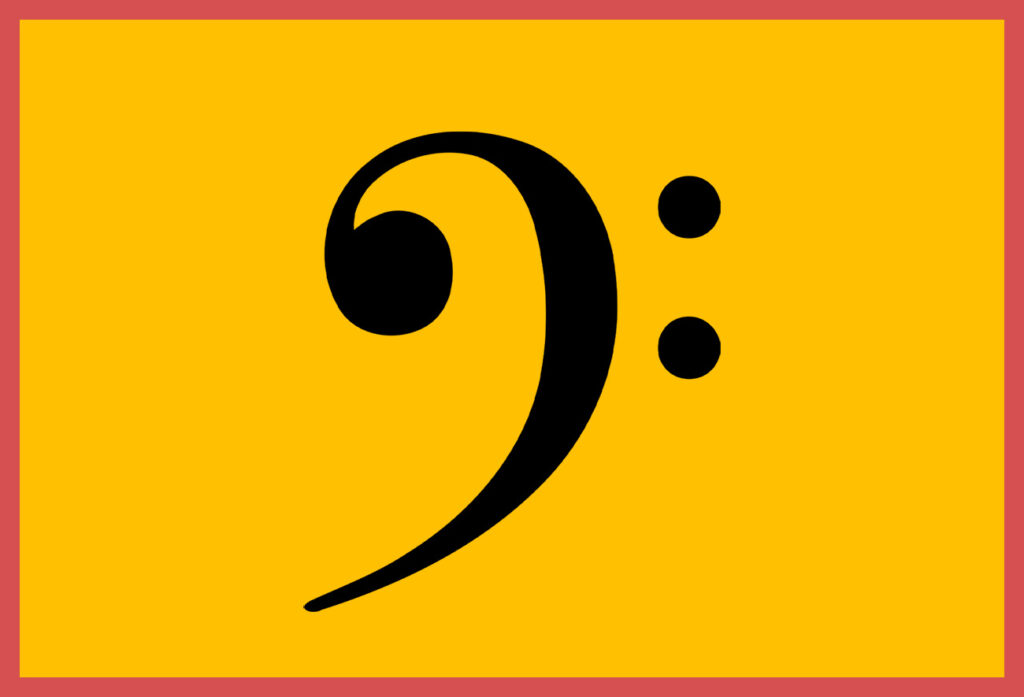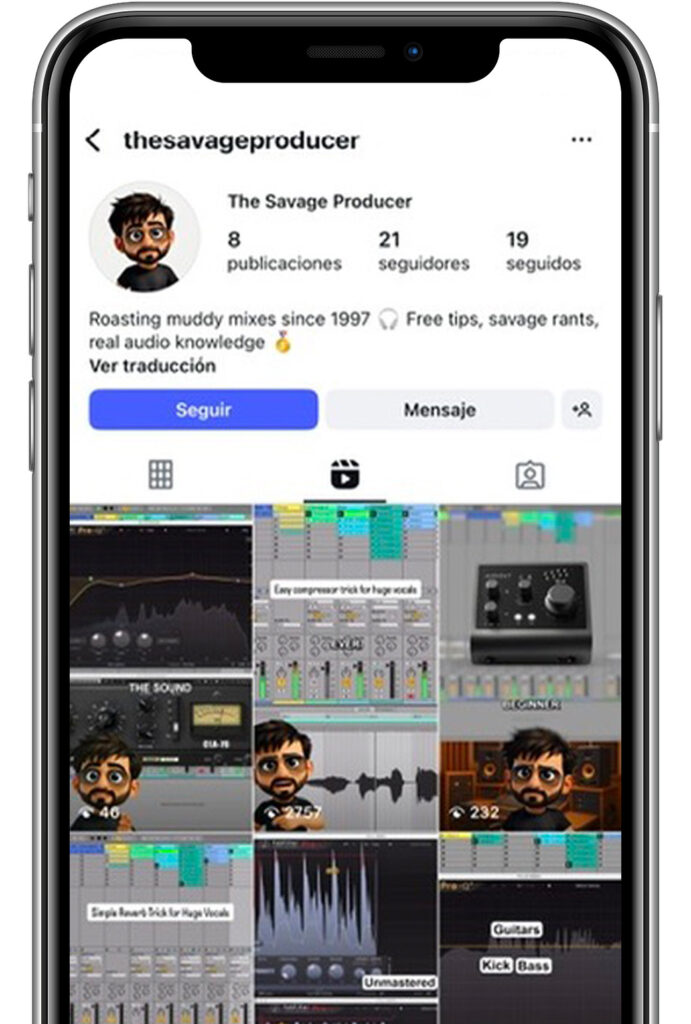What is the bass clef?
The bass clef is the second most important clef in music and determines the position of the note F in a pentagram. It is the basis of musical notation for pitches below C4 (American notation), also called c1 or c' in Germany - that is, below middle C on the piano (bowed octave). It is called the "bass clef" because many low instruments (including the bass) read music in this clef.
Why do we need the bass clef?
The bass clef is very important - without it, the notes for the low instruments would have to be written in treble clef, which would require many auxiliary lines under the pentagrams, making the score very difficult to read.
A double bass score in treble clef would look like this:

But if I write the same melody in bass clef, it looks much better:

So we see that each key is responsible for a completely different range. This must be understood and internalized in order to truly understand the meaning and purpose of the bass clef. The following diagram shows the respective areas of each key:
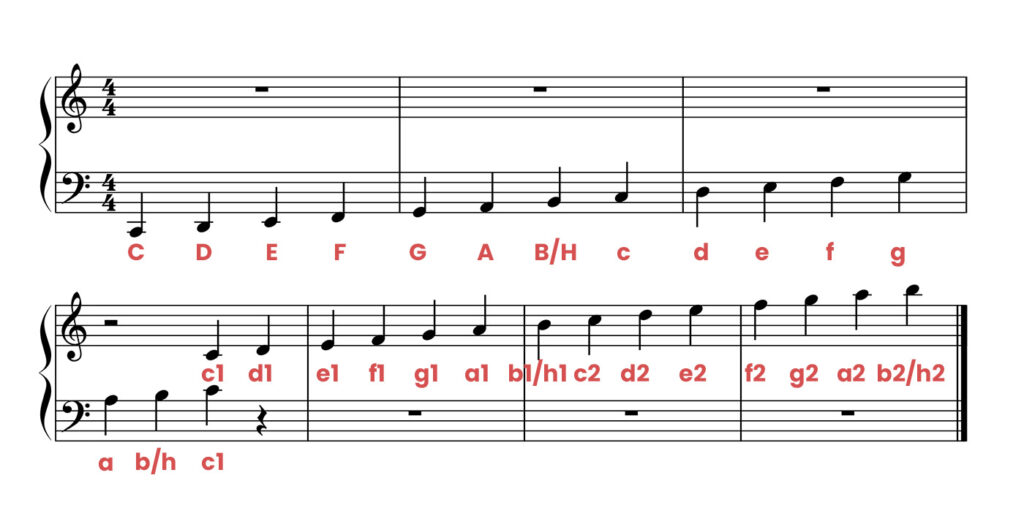
The bass clef also helps the pianist immediately recognize which part should be played with the left hand and which with the right.
How do you draw the bass clef?
First draw a point on the fourth line (counting from the bottom) of the staff - this is the position of the note F. From there draw a large curve, a kind of "inverted C".
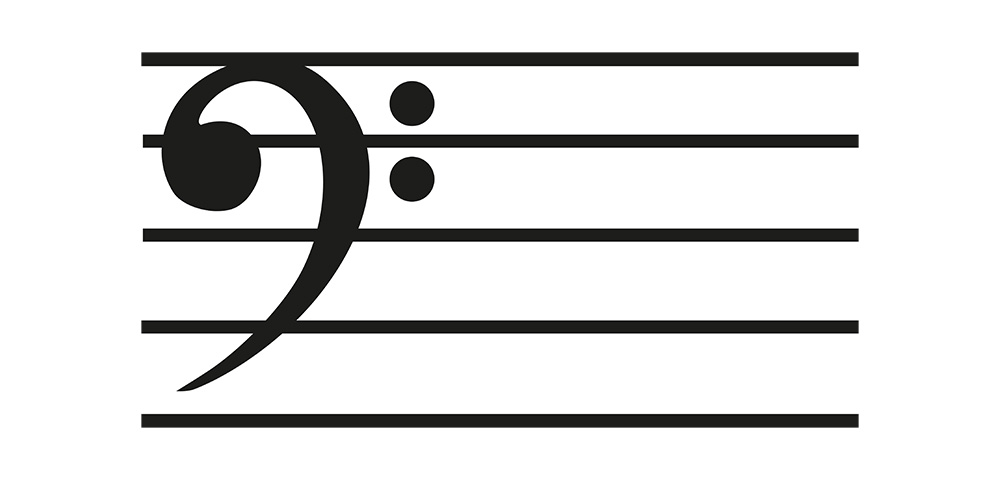
Finally, write two dots directly after the bass clef in the gaps around F (one between lines 3 and 4 and one between lines 4 and 5).
How do you write notes in bass clef?
Learning to read notes in bass clef takes time and patience - especially if you know treble clef well, there will be a lot of confusion in the beginning. At first, your brain will tend to read the notes in the treble clef because you already know them.
But with time, reading music becomes second nature. Piano scores are always written in both clefs (bass clef for the left hand, treble clef for the right hand) - so pianists need to know both clefs perfectly and be able to read them at the same time. And even this is possible!
There are several mnemonic aids that can help you memorize the notes of the bass clef at the beginning. Let's look again at the mnemonics for the notes on the lines and the notes on the spaces of the staff:
The notes on the lines are: G-B-D-F-A (from bottom to top).

The notes on the gaps are: A-C-E-G (from bottom to top).
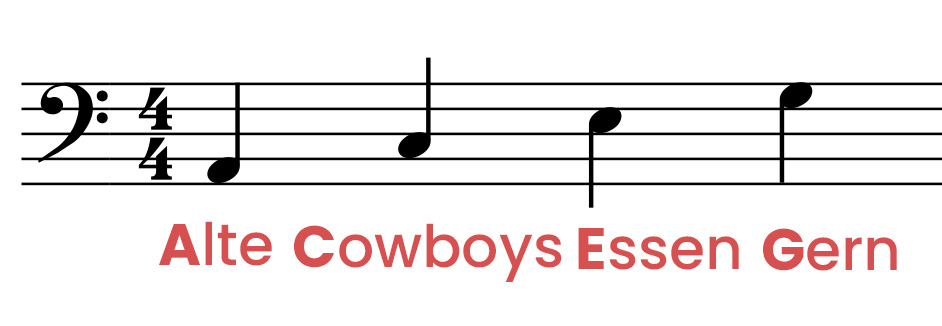
If the mnemonics are too complicated for you, you can always find all the other notes starting from F by going down or up the staff step by step. You know that F is on the fourth line (it's written in the bass clef) - from there you can find all the other notes.
Which instruments use the bass clef?
Several musical instruments use bass clef, especially those that produce low notes. For example, the double bass, the lowest stringed instrument, is almost exclusively written in bass clef. The violoncello is similar, although it also uses tenor clef and occasionally treble clef.
Brass instruments such as the trombone and tuba also use this clef. The trombone often uses bass clef, but not exclusively. The tuba, being a very low instrument, writes its music exclusively in bass clef. This is also the case for some woodwinds - the bass clarinet and bassoon, for example, use this clef primarily.
The piano is a special case because it uses two clefs simultaneously. While the notes for the right hand are written in treble clef, the notes for the left hand are usually written in bass clef.
What is the difference between bass clef and treble clef?
The bass clef is used to represent lower pitches. The bass clef symbol indicates that the line between the two points of the symbol represents the F note. This F note is a fifth below the so-called "middle C" and is therefore called F3.
On the other hand, the treble clef is used to represent higher pitches. Its symbol, which looks like a stylized "G", indicates that the line running through the inner loop of the symbol represents the note G. This note G is a fifth above "middle C" and is therefore called G4.
Basically, these clefs determine where the note C4 (the "middle C") is located on the staff. In the treble clef, the "middle C" is one line below the staff; in the bass clef, it is one line above the staff.
Keep reading:





